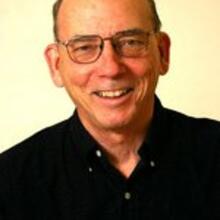When I taught critical journalism I never offered Roger Ebert as a writer’s role model. Our guide was William Zinsser, whose On Writing Well distinguished between the reviewer, seen as part of the marketing game, and the critic, who was a literary artist. We turned to H. L. Mencken, for whom the novel or play was like the swimming pool’s diving board, from which the critic would soar into space and show off his style. Finally, there was the critics’ critic, the merciless John Simon, for whom the critic’s job was to kill off bad books, plays and films so the good ones would have space to breathe.
Nevertheless, because I had been a moviegoer since grammar school, taking in two films a week during the 1940s, I watched Siskel and Ebert religiously for years. I needed their advice. When Siskel died, I stuck with Ebert as he moved through several replacements until I lost him when he moved his time and network; then he too began to die.
For Ebert the all-time great film was “Citizen Kane,” because every time he watched it he discovered something new. Great films may confuse the intellect, he said, but never lie to the emotions. I tested him, and myself, on my own favorite: Alexander Korda’s “Four Feathers” (1939), about a disgraced British officer who in 1875 proves his courage by traveling in disguise to a battlefield in Sudan in order to return white feathers that had been given him as symbols of cowardice by his officer comrades. Alas, Ebert had reviewed only the version by Heath Ledger in 2002, the sixth remake. He disses it for its incredible plot and sinks it with two stars.
Only after his death did I discover that Ebert had “died”—and lived—three times.
A journalist from his birth in Chicago in 1942, as a child Roger Ebert published his own neighborhood newspaper. He edited his high school and college papers and was named film critic of The Chicago Sun-Times at the age of 24. He won a Pulitzer Prize in 1975, the same year he teamed with the Chicago Tribune’s Gene Siskel on public television, with their “thumbs up/thumbs down” verdicts, which annoyed established critics but delighted ordinary viewers. Less profound, perhaps, than some critics, he was nevertheless the most influential.
All this changed in 2002 when thyroid cancer devastated him. Portly, he became gaunt; his jaw was gone. Fed through a tube for years, he could not eat, drink or speak, but he kept writing and blogging for nearly a million followers on Facebook and Twitter.
He knew how he looked, but he told Esquire in 2010: “All is well. I am as I should be.” Weeks after his death I came across him in a panel discussion on late night television. His appearance was shocking. With no jaw, his chin dangled, his mouth hung open, his eyes blazed with light as he typed comments into his laptop and a mechanical voice proclaimed his words. Only courage could enable him to carry on believing this was how he “should be.”
Meanwhile he struggled with how to believe in God. From first grade he gazed at the midnight sky and asked how God could be infinite. He loved his nuns and in the winter mornings rode his bike to serve Mass. Catholicism made him a “humanist” but left questions unanswered. He said his belief in evolution enriched his search, opening him to symbolism, literature and the arts. Though never an atheist, he could not accept zealots “more Catholic than the pope.” Refusing to be categorized, in the week before he died he wrote on his blog “I consider myself Catholic, lock, stock and barrel, with this technical loophole: I cannot believe in God.”
A week ago I saw Terrence Malick’s “To the Wonder” because that was the last film Ebert reviewed. Two lovers lose their love, and a priest cares for the most needy and unlovable persons, who are incapable of returning his affection. Ebert reports he is overwhelmed by the priest’s loneliness. He does not criticize the director for not explaining himself. It is enough to “reach beneath the surface and find a soul in need.”
In his homily at Ebert’s funeral, John Costello, S.J., compared Ebert’s acceptance of suffering to that of the Jesuit in Shusaku Endo’s novel The Silence, in which God is silent as martyrs die. Apparently Chicago’s Cardinal Francis George saw no need to label Roger Ebert’s pilgrimage. In a letter read at the funeral, he declared: “He was a believer, he has always been a believer, and I welcome him into this church.”








